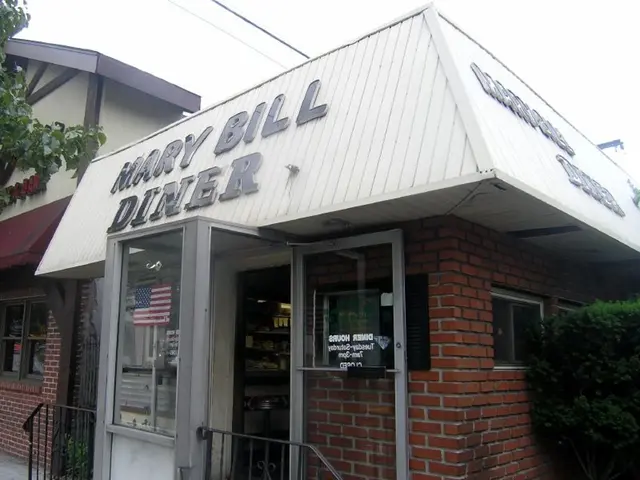Optimal Serving Temperature for Cheese Consumption
Ready to level up your cheese game? Here's the scoop on how to serve and store cheese for maximum flavor.
First things first, that chill in your fridge might be ruining your cheese experience. Cheese experts agree that the ideal temperature to serve cheese is around room temperature - between 62° to 72°F (16° to 22°C), according to the pros at Wisconsin Cheese. This allows the fat molecules in cheese to relax and emit aromas, enhancing the flavors you can taste. In fact, up to 75% to 95% of our taste perception comes from what we smell[1].
"Bries get nice and runny, Alpine cheeses are more supple, and aged cheddars give you that beautiful contrast between creamy and crunchy from the crystalized amino acids," says Tessie Ives-Wilson, an American Cheese Society Certified Cheese Professional[2].
So, when preparing your cheese board, remove your cheese from the fridge 30 to 60 minutes prior to serving. If you aren't planning to devour the whole piece, cut it while it's cold and only bring the portion you're going to eat to room temperature. Bringing the whole cheese in and out of the fridge can dry it out, shortening its lifespan[3].
If your cheese is wrapped in paper or plastic or in a container, unwrap it and place it on a plate or serving tray, then cover it with plastic wrap, a mixing bowl, a cake dome, or cheesecloth to keep it moist[3]. Don't forget, if you're serving cheese in warm weather, it likely doesn't need to come up to room temperature before serving[2].
Now that you know the best temperature, it's essential to store your cheese properly until you're ready to dish it out. Here are some tips:
- If your cheese comes in a container, store it in that vessel (with its brine if it's provided)[3].
- Wrap cheese in breathable materials like cheese paper, parchment paper, or waxed paper[2].
- Store cheese in a crisper drawer, away from strong-smelling items like meats and produce[3].
- Set your refrigerator to between 32° to 41°F (0° to 5°C), with cheese preferably around 38°F[2].
By following these storage guidelines, you will slow down the bacteria that ripen cheese and prevent it from drying out[2]. In short, cheese is alive and needs to be treated with care!
So there you have it, folks! With these pro tips and tricks, you can take your cheese board from ordinary to extraordinary, making every cheese-lover's dreams come true. Just remember, the ultimate cheese adventure is all about personal preference, so enjoy your favorites in whatever way you like!
[Source References][1] Acadamy of Cheese, Understanding the Science of Taste[2] Cheese Queen BG, How to Properly Store Cheese[3] Better Homes & Gardens, The Best Temperature to Eat Cheese and How to Store it Until You Plan to Enjoy It[4] Zingerman's Deli, ACS Certified Cheese Professional Tessie Ives-Wilson[5] Timbers at Arbor Day Farm, Executive Chef Garrett Kasper
- For a better cheese experience, learn how to cook with recipes that incorporate cheese, such as those found on the Bhg website.
- The Recipes by Ingredient section might have specific guidance on how to use different types of cheese, including camembert, cheddar, and gouda.
- To elevate your cheese game, consider reading ingredient explainers, which can provide information about the origin, flavor profiles, and best pairings for various cheeses.
- Agree with cheese experts who recommend serving cheese at room temperature (between 62° to 72°F or 16° to 22°C) for maximum flavor development and enhanced aromas.
- When designing a cheese garden, keep in mind the ideal storage temperature for cheese (between 32° to 41°F or 0° to 5°C), as suggested by Better Homes & Gardens, to slow down the bacteria that ripen cheese and prevent it from drying out.



